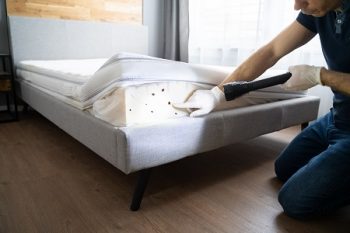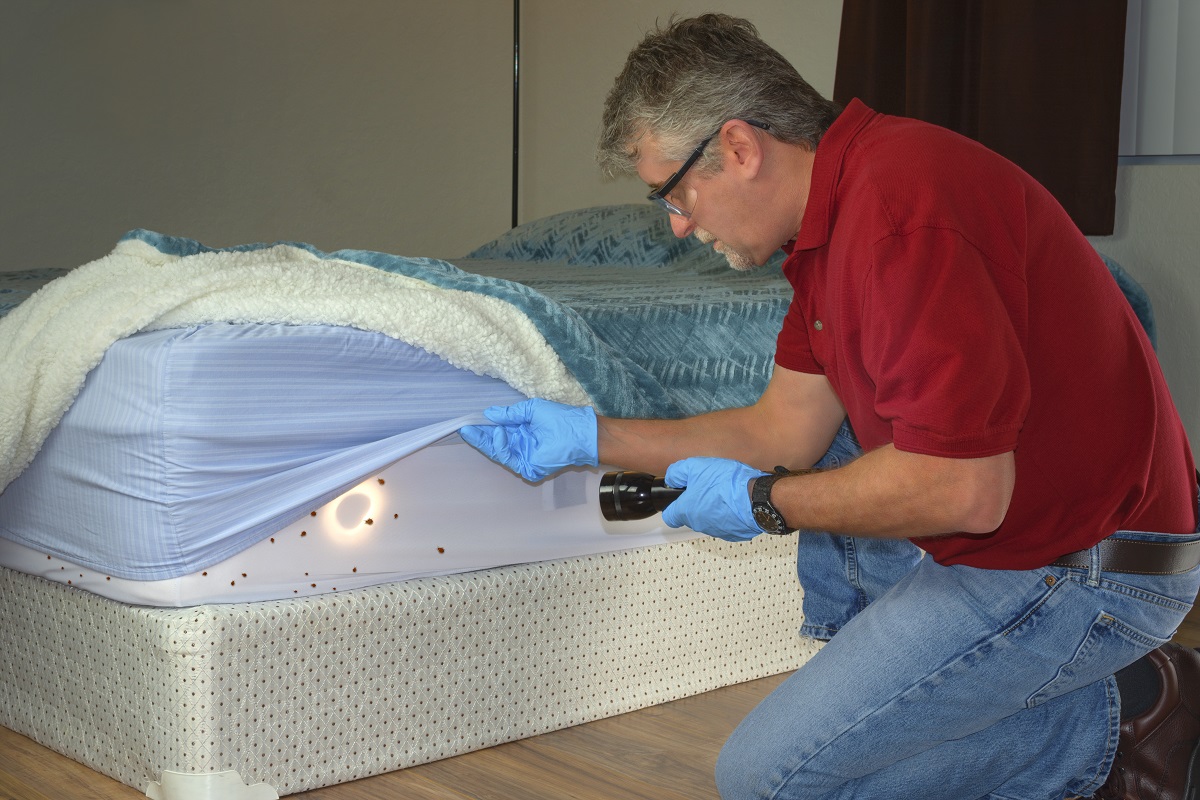Understanding Various Therapy Options for Bed Bug Control
In the realm of insect administration, bed insects present a distinct difficulty that needs a calculated and well-balanced approach for effective control. Comprehending the various treatment options readily available is crucial in dealing with infestations quickly and comprehensively. From traditional chemical treatments to innovative warm treatments and green all-natural treatments, each approach features its very own set of factors to consider and advantages. Additionally, incorporated bug administration methods and the know-how of expert elimination services can provide a holistic technique to tackling bed bug concerns. As we browse with the nuances of these treatment choices, the vital hinge on choosing the most suitable approach that straightens with both effectiveness and sustainability in bed pest control.

Chemical Therapies
Chemical treatments are a typical approach used in the professional control of bed insects. These therapies entail the application of pesticides to targeted locations where bed bugs exist. Professionals typically use a combination of residual insecticides, which continue to be efficient for a prolonged duration, and contact pesticides, which act rapidly to eliminate bed pests upon direct call. The choice of insecticide and application method may differ relying on the extent of the infestation, the kind of setting being dealt with, and any type of possible wellness concerns for owners.
When carrying out chemical therapies for bed bug control, it is vital to follow all safety guidelines and guidelines to decrease risks to humans, family pets, and the atmosphere. Chemical therapies can be a powerful device in the extensive administration of bed insect invasions when made use of judiciously and in conjunction with various other control approaches.
Heat Treatments

One of the key benefits of warm treatments is that they do not include using pesticides, making them a recommended choice for those worried about chemical direct exposure. In addition, warm therapies can be completed in a fairly brief period, commonly in a single day, lessening disruption to the passengers of the treated room.
However, it is essential to get the services of qualified specialists when opting for warm therapies, as inappropriate use warm can pose fire dangers and damages building. In general, warm therapies stand for a safe, effective, and ecologically pleasant strategy to combating bed bug infestations.
Natural Treatments
When looking for alternative approaches for bed bug control, all-natural remedies offer a chemical-free technique that can be effective in combating invasions. These oils can be weakened and sprayed around bed frames, walls, and other areas where bed insects might hide. While natural remedies can be efficient, it's important to keep in mind that they may call for repeated applications and thoroughness to attain successful bed pest control.
Integrated Insect Monitoring
Thinking about the varied methods available for bed insect control, Integrated Pest Administration (IPM) stands out as a thorough strategy that integrates various techniques to successfully resolve insect problems. IPM focuses on long-lasting avoidance and management of parasites through a mix of strategies such as inspection, tracking, and therapy.
One trick facet of IPM is the emphasis on accurate identification of the bug varieties and their specific behaviors. By comprehending the biology and behaviors of bed pests, pest control professionals can establish targeted approaches to eradicate infestations. Furthermore, IPM advertises using non-chemical control techniques, such as sealing holes and cracks, vacuuming, heat treatments, and making use of mattress coverings.
Furthermore, IPM supporters for the wise application of Click This Link chemicals as a last option, prioritizing using low-toxicity products and incorporated strategies. Normal tracking and follow-up assessments are crucial parts of IPM to make sure the efficiency of the treatment and avoid reinfestations. Overall, Integrated Parasite Monitoring uses a lasting and he said alternative method to bed bug control, advertising eco accountable practices while properly handling pest populations.
Specialist Extermination Services
:max_bytes(150000):strip_icc()/Bed-bug-control-tips-and-tricks-2656377-e580f433c55a4a98826e429753062084.jpg)
Specialist pest control men make use of a variety of strategies to combat bed insect invasions, consisting of the application of pesticides, heat treatments, vacuuming, and steam treatments. They are furnished with the needed devices and tools to get to hidden areas where bed bugs may reside, such as splits, holes, and wall surface gaps.
Moreover, professional extermination services frequently include multiple brows through to ensure that all bed bugs and their eggs are completely eliminated - Bed Bug Inspection Chicago Top Pest Killers. This extensive method helps avoid reinfestations and ensures long-term control of bed pests in the cured area
Additionally, pest control men can offer important guidance on preparing the ravaged location prior to treatment and deal referrals for stopping future bed bug problems. On the whole, expert extermination solutions use a extensive and effective service helpful site for dealing with bed pest invasions.
Conclusion
In verdict, different therapy alternatives for bed bug control consist of chemical therapies, warm therapies, natural remedies, incorporated pest administration, and expert elimination services. Each choice has its very own benefits and limitations, so it is essential to meticulously consider the particular scenarios of the problem prior to choosing a treatment technique. Reliable bed pest control requires an extensive method that might include a mix of these therapy alternatives to efficiently remove the problem.
Chemical therapies can be an effective device in the comprehensive administration of bed insect invasions when made use of deliberately and in combination with various other control approaches.
Utilized in professional bed bug control, heat treatments provide a non-chemical solution for removing bed bug infestations properly. These oils can be diluted and sprayed around bed structures, walls, and other locations where bed bugs might hide.In verdict, various treatment alternatives for bed insect control consist of chemical treatments, heat treatments, natural remedies, incorporated bug management, and expert elimination services. Effective bed pest control needs an extensive strategy that might involve a combination of these therapy alternatives to successfully remove the infestation.